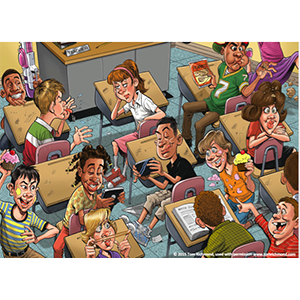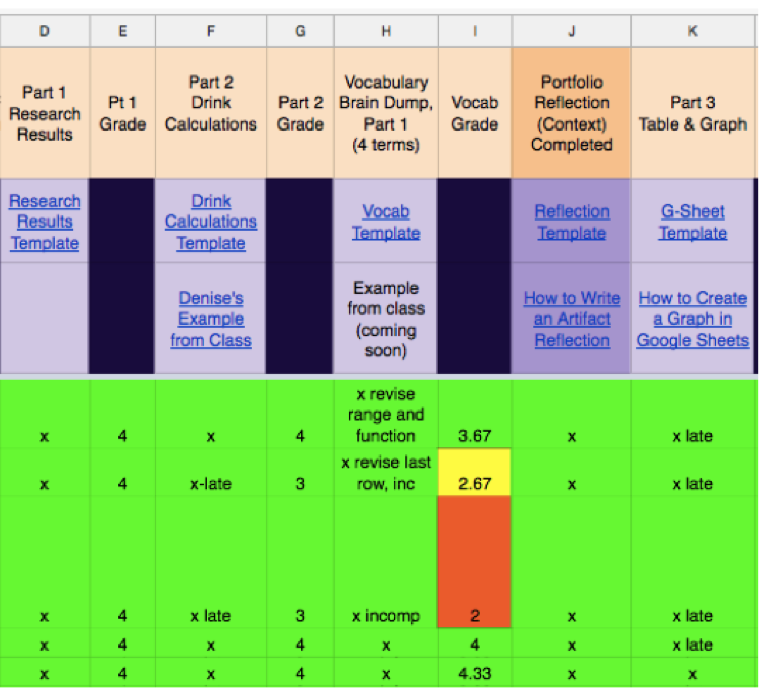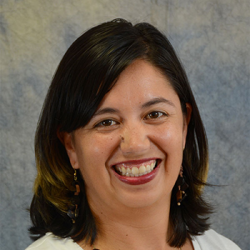
When I started my teaching career, I worked in a vibrant Project Based Learning community and was told to just jump in and get my students doing projects! It sounded amazing! However, as a new educator, I didn’t know how to get a room of teenagers quiet enough so they could listen to my instructions, I couldn’t yet figure out how to determine who was on task (and who wasn’t), and sometimes I wasn’t even sure if my students were all still in the room.
Now, I have experienced what most instructional coaches, PBL gurus, and veteran teachers say: If teachers focus on high quality instruction, rather than classroom management, then most discipline issues will disappear. That may be true. But the fact of the matter is, when I was a teacher struggling to feel “in control” of my classroom, I felt reluctant to try many of the seemingly out of reach elements of PBL. The idea of “letting go” of control is terrifying if you never feel like you’ve achieved it in the first place.
In order to master high quality PBL in your classroom, to get that “buzz” of student productivity that we so often hear about, “letting go” or “giving up control” isn’t actually necessary. Rather, structuring classroom routines, developing systems, and best practices in your classroom can make new PBL teachers and learners feel more supported, clear, and successful. Moreover, these structures and routines can be essential when introducing PBL to students who are used to more teacher-centered classrooms.
Here are three structures that I use regularly myself and put forth as a kind of scaffolding for new teachers to hang on to as they learn the ropes and gain more comfort in the chaos of PBL.

Create clear expectations for what “productivity” looks like.
I often have in my head a vision of what it will look like when students begin the real, deep work of the project. Maybe students are preparing persuasive speeches for the school board and I envision them silently at their computers, chewing on pencils and looking thoughtfully at the ceiling while they craft their ideas. In reality, that may not be how my students ideate, and unless I have explicitly told them what it should look and sound like while they’re working and why, it’s going to be frustrating when I try to enforce expectations that they don’t know and I can’t justify.
Before launching into a work period with students, I like to explicitly name what they should be doing and how I think it should look and sound. After explaining the “why” behind my expectations, I also let students advocate if they want to be able to use a partner as a sounding board, or need to walk around occasionally while they’re thinking. This way we’re both clear about what it can look like while they’re being productive.
Create visible and transparent trackers to show student progress and hold students accountable.
Most of my students are new to PBL and are still developing skills of time management and self-advocacy. As a result, I often do a lot of work to help them divide the project into manageable chunks and keep themselves on track. I have several colleagues who do this incredibly well. The image below is a section of a project tracker created by Denise Huey, an Algebra I teacher, which is projected during class each day as well as published on her website and sent regularly to students’ advisors and parents. Students and adults know exactly where they are in the process every step of the way. Denise has found this especially valuable for parents who are new to PBL and struggle to stay in the loop when there might not be daily homework assignments to check.

Create a system so students know how and when to get help if they are stuck.
This might sound obvious, but has been a lifesaver in my classroom. As a PBL teacher, I want my students to take ownership of their work, investigate independently, and solve problems together. As students from more traditional classrooms, they are more comfortable when a teacher stands in one place and is there whenever they have a question. This results in 35 students calling my name and following me around the room when they get stuck. Yes, I work to make them more independent learners, to put more tools and resources in their hands, and to let them realize that I’m learning with them and just guiding them through the process. But I have also developed a system where students sign up for independent help or small group instruction on one spot on the board, they are not allowed to call my name, and they know that they need to ask their peers and use their resources before I will help them. Many headaches and teenage tantrums have been avoided using this simple solution.

